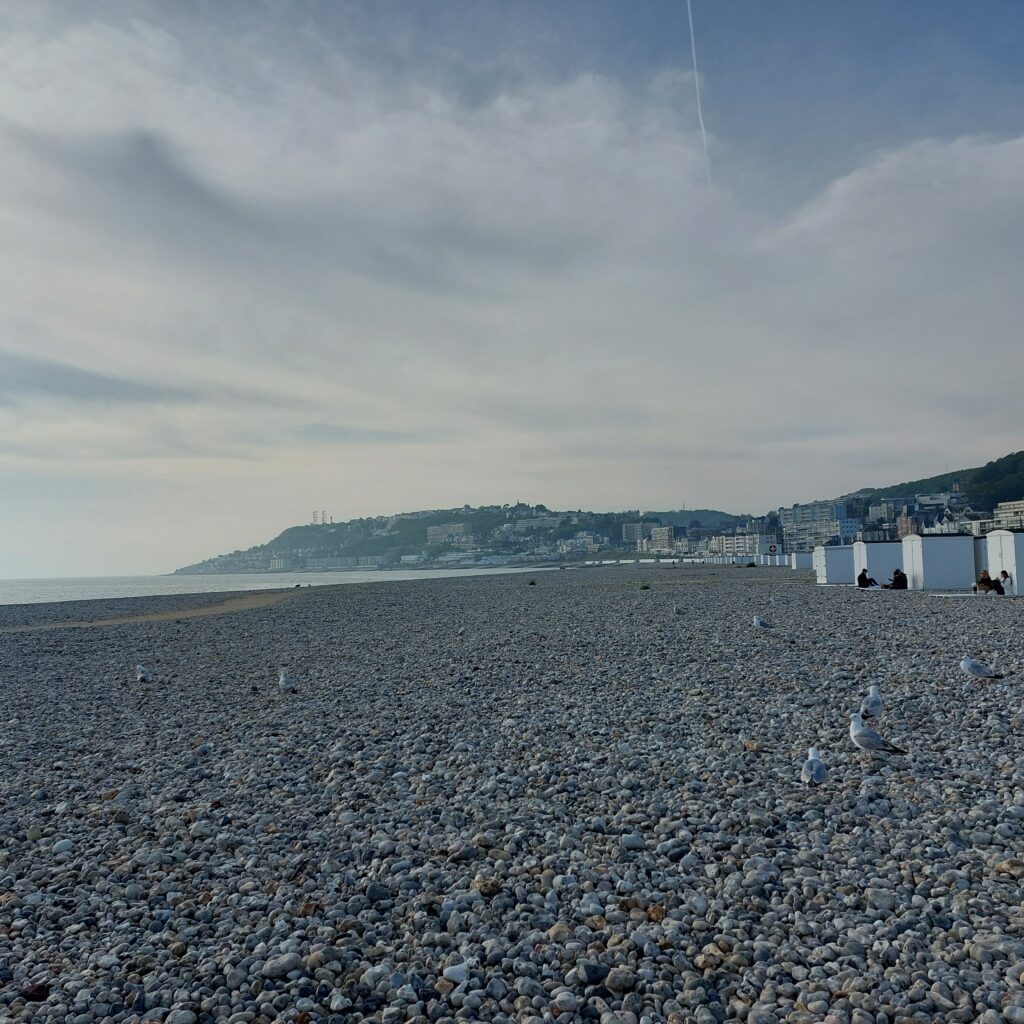The estuary of the Seine has at all times been an important hub between the inland and the sea, and this time we mean literally ‘all times’. Human activity goes back a full 400,000 years, to prehistoric times. This was also Asterix-land (Gallic-Roman), with activities linked to the Seine traffic. The city of Francispolis was formally founded in 1517 by King François I (for fear of English invasion), but by then the city was already established. For many years it was called Le Havre-de-Grâce (Harbour of Grace), and after the Revolution just Le Havre (The Harbour).

In 1914, Le Havre had around 150,000 inhabitants. During the First World War, 7,500 of them died (mostly sailors and soldiers). However, the city escaped the bombardment because the front was much further north. Still, World War II was a disaster for the city. Le Havre was occupied by the Germans, 5,000 people were killed and 12,000 homes destroyed (both devastation by the retreating Nazis, but also by massive Allied bombing). The result was a large exodus, and the population in 1945 was down to around 100,000. Today, Le Havre has again 150,000 inhabitants but this is currently declining.

After the war, it was decided to build up the city as quickly as possible, without copying what was there before. The architect Auguste Perret designed a completely new center in reinforced concrete, and this unique city center was placed on the UNESCO World Heritage List in 2005. The construction took place using prefabricated elements, where each module unit was 6.24 m. The restoration was finished with the consecration of the Saint Joseph church in 1964.

Perret’s use of concrete in a modernist style was not immediately praised, and further development of the style in Eastern Europe has given rise to terms such as ‘Stalin architecture‘ about it. And yes, it does feel overwhelming.

We visited Le Havre on an ordinary Sunday, and the city appeared cold, boring and empty of people. When there’s nothing to do, a bath is just right, you might think, and yes, it was. The area around Le Havre is full of water and swamps (it is, after all, the Seine’s delta), but to the north-west of the city there is a wonderful, long, pebble beach.

There were people at the beach! And there were seagulls. And in the north, parts of the old city were also preserved.

In the project ‘Un Eté au Havre‘ (A summer in Le Havre) in 2017, the port and the city’s 500th anniversary were celebrated. Several of the artworks have since become permanent elements in the city, including UP #3 by Sabina Lang and Daniel Baumann.

We had a nice swim by the Beach, surrounded by seagulls and sort-of exhausted young people. But we think that massive bombing of ‘The Harbour of Grace‘ was not just right.
